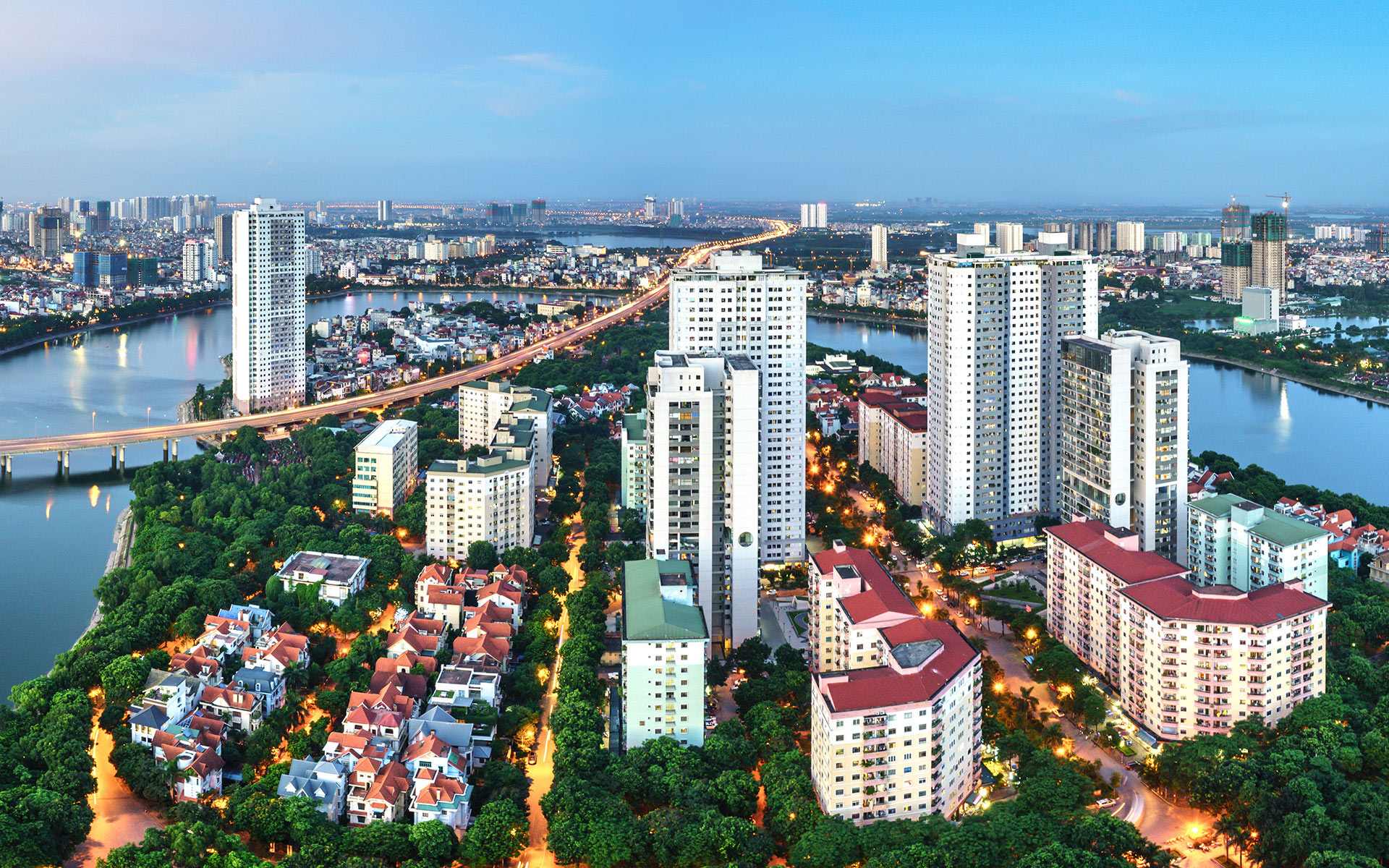- Article

- Global Research
- General Research Insights
- Energy transition
- Emerging markets
- Understand ESG
Vietnam at a glance - The energy transition
- The long-anticipated Power Development Plan 8 sets out a roadmap for Vietnam’s energy transition over 2021-30
- The goal is to gradually reduce the country’s dependency on coal while diversifying energy sources to wind and LNG
- Vietnam is working with ASEAN and G-7 partners to address hurdles on infrastructure and funding
Hungry for energy. As Vietnam’s economy continues to expand and develop, the demand for energy has increased sharply in recent years. The country was once an energy exporter, but became a net importer in 2015 as domestic production dwindled and demand continued to rise. The latest El Niño-related power crunch is a reminder of the importance of diversifying into other energy sources – particularly renewables – in response to rising power needs.
The PDP8 roadmap. Released in May, the long-anticipated Power Development Plan 8 (PDP8) sets out an energy roadmap for 2021-30, reflecting Vietnam’s green transition ambitions. In less than a decade, Vietnam wants to diversify away from coal (from a 30% to a 20% dependency ratio) while increasing the share of wind and LNG in its total power production by 2030. Some regions in Vietnam have untapped potential to expand the country’s wind footprint, while LNG is seen as a transition fuel to accommodate rising energy demand.
Challenges ahead. The path to energy transition is not easy. Vietnam faces two main hurdles: (1) inadequate infrastructure and lack of transmission capacity may constrain its renewable energy ambitions; and (2) funding is a key concern. The authorities have been addressing these challenges. For example, Vietnam has become the third developing country to receive sizeable funding from the G-7 to assist in its transition through the Just Energy Transition Partnership (JEPT) programme.
ASEAN co-operation. Co-ordinated regional cooperation is also key to creating a more reliable and resilient power supply. Some ASEAN initiatives are already under way. For example, Singapore is looking to import offshore wind power from Vietnam from a joint wind power plant that will be connected through an undersea high-voltage cable. In our view, co-operation is crucial for helping regional economies realise their energy targets.
Would you like to find out more? Click here* to read the full report. You must be a subscriber to HSBC Global Research.
To find out more about HSBC Global Research and how to subscribe, email us at askresearch@hsbc.com
*Please note that by clicking on this link you are leaving the HSBC Global Commercial Banking Website, therefore please be aware that the external site policies will differ from our website terms and conditions and privacy policy. The next site will open in a new browser window or tab.
The following analyst(s), who is(are) primarily responsible for this document, certifies(y) that the opinion(s), views or forecasts expressed herein accurately reflect their personal view(s) and that no part of their compensation was, is or will be directly or indirectly related to the specific recommendation(s) or views contained in this research report: Yun Liu, Wai-Shin Chan, CFA, Jun Takazawa, Heidi Tang and Polo Heung
This document has been issued by the Research Department of HSBC.
HSBC and its affiliates will from time to time sell to and buy from customers the securities/instruments, both equity and debt (including derivatives) of companies covered in HSBC Research on a principal or agency basis or act as a market maker or liquidity provider in the securities/instruments mentioned in this report.
Analysts, economists, and strategists are paid in part by reference to the profitability of HSBC which includes investment banking, sales & trading, and principal trading revenues.
Whether, or in what time frame, an update of this analysis will be published is not determined in advance.
For disclosures in respect of any company mentioned in this report, please see the most recently published report on that company available at www.hsbcnet.com/research.
Additional disclosures
- This report is dated as at 01 August 2023.
- All market data included in this report are dated as at close 31 July 2023, unless a different date and/or a specific time of day is indicated in the report.
- HSBC has procedures in place to identify and manage any potential conflicts of interest that arise in connection with its Research business. HSBC's analysts and its other staff who are involved in the preparation and dissemination of Research operate and have a management reporting line independent of HSBC's Investment Banking business. Information Barrier procedures are in place between the Investment Banking, Principal Trading, and Research businesses to ensure that any confidential and/or price sensitive information is handled in an appropriate manner.
- You are not permitted to use, for reference, any data in this document for the purpose of (i) determining the interest payable, or other sums due, under loan agreements or under other financial contracts or instruments, (ii) determining the price at which a financial instrument may be bought or sold or traded or redeemed, or the value of a financial instrument, and/or (iii) measuring the performance of a financial instrument or of an investment fund.
This document has been issued by The Hongkong and Shanghai Banking Corporation Limited, which has based this document on information obtained from sources it believes to be reliable but which it has not independently verified. Neither The Hongkong and Shanghai Banking Corporation Limited nor any member of its group companies (“HSBC”) make any guarantee, representation or warranty nor accept any responsibility or liability as to the accuracy or completeness of this document and is not responsible for errors of transmission of factual or analytical data, nor is HSBC liable for damages arising out of any person’s reliance on this information. The information and opinions contained within the report are based upon publicly available information at the time of publication, represent the present judgment of HSBC and are subject to change without notice.
This document is not and should not be construed as an offer to sell or solicitation of an offer to purchase or subscribe for any investment or other investment products mentioned in it and/or to participate in any trading strategy. It does not constitute a prospectus or other offering document. Information in this document is general and should not be construed as personal advice, given it has been prepared without taking account of the objectives, financial situation or needs of any particular investor. Accordingly, investors should, before acting on it, consider the appropriateness of the information, having regard to their objectives, financial situation and needs. If necessary, seek professional investment and tax advice.
The decision and responsibility on whether or not to purchase, subscribe or sell (as applicable) must be taken by the investor. In no event will any member of the HSBC group be liable to the recipient for any direct or indirect or any other damages of any kind arising from or in connection with reliance on any information and materials herein.
Past performance is not necessarily a guide to future performance. The value of any investment or income may go down as well as up and you may not get back the full amount invested. Where an investment is denominated in a currency other than the local currency of the recipient of the research report, changes in the exchange rates may have an adverse effect on the value, price or income of that investment. In case of investments for which there is no recognised market it may be difficult for investors to sell their investments or to obtain reliable information about its value or the extent of the risk to which it is exposed. Some of the statements contained in this document may be considered forward looking statements which provide current expectations or forecasts of future events. Such forward looking statements are not guarantees of future performance or events and involve risks and uncertainties. Actual results may differ materially from those described in such forward-looking statements as a result of various factors.
This document is for information purposes only and may not be redistributed or passed on, directly or indirectly, to any other person, in whole or in part, for any purpose. The distribution of this document in other jurisdictions may be restricted by law, and persons into whose possession this document comes should inform themselves about, and observe, any such restrictions. By accepting this report, you agree to be bound by the foregoing instructions. If this report is received by a customer of an affiliate of HSBC, its provision to the recipient is subject to the terms of business in place between the recipient and such affiliate. The document is intended to be distributed in its entirety. Unless governing law permits otherwise, you must contact a HSBC Group member in your home jurisdiction if you wish to use HSBC Group services in effecting a transaction in any investment mentioned in this document.
Certain investment products mentioned in this document may not be eligible for sale in some states or countries, and they may not be suitable for all types of investors. Investors should consult with their HSBC representative regarding the suitability of the investment products mentioned in this document.
HSBC and/or its officers, directors and employees may have positions in any securities in companies mentioned in this document. HSBC may act as market maker or may have assumed an underwriting commitment in the securities of companies discussed in this document (or in related investments), may sell or buy securities and may also perform or seek to perform investment banking or underwriting services for or relating to those companies and may also be represented on the supervisory board or any other committee of those companies.
From time to time research analysts conduct site visits of covered issuers. HSBC policies prohibit research analysts from accepting payment or reimbursement for travel expenses from the issuer for such visits.
The Hongkong and Shanghai Banking Corporation Limited is regulated by the Hong Kong Monetary Authority.
© Copyright 2023, The Hongkong and Shanghai Banking Corporation Limited, ALL RIGHTS RESERVED. No part of this publication may be reproduced, stored in a retrieval system, or transmitted, on any form or by any means, electronic, mechanical, photocopying, recording, or otherwise, without the prior written permission of insert issuing entity name. MCI (P) 017/01/2023, MCI (P) 027/10/2022



